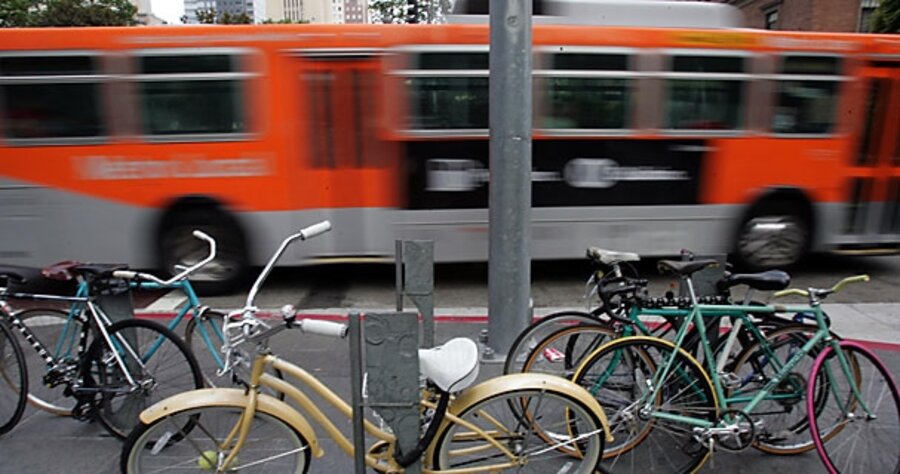Study finds decline in American driving
Loading...
More and more, Americans are leaving their cars in the driveway, a new study from the Brookings Institution has concluded.
Brookings researchers Robert Puente and Adie Tomer analyzed driving patterns from 1991 to 2008 in all 50 states and in the 100 largest US cities. Their report, titled "The Road ... Less Traveled" [PDF], found that driving, as measured by total vehicle miles traveled per year, began to plateau in 2004 and then began dropping in 2007.
Per-capita vehicle miles traveled followed a similar pattern, flatlining in 2000 and then beginning to decline in 2005. This drop, which adds up to 388 miles per year, is the steepest since World War II.
“The American driver has hit a wall,” says Mr. Puentes in a press release [PDF]. “We are now driving the same distance per year as we did in 1998.”
Not caused by gas prices
The trend long predates the steep hike in gasoline prices this year. What's more, data from the Federal Highway Administration shows that this trend continued through October, even as gas prices fell from their summer highs.
The authors speculate that the drop could be caused by the saturation of vehicle availability, the plateau in the number of women entering the workforce, increased mass-transit ridership, rising unemployment, or, optimistically, "a possible ceiling in the amount of driving any one individual can tolerate."
Varying rates of decline
Driving is declining at different rates in different regions, with a few areas driving more. Drivers in Nevada, Idaho, and Colorado are leading the way in kicking the car habit, with declines of more than 7 percent in miles driven since December 2006.
The only states that showed a net increase in total driving are North Dakota, South Dakota, Montana, Oklahoma, and Wyoming.
People in cities are also getting out of their cars, with the steepest declines seen in Austin, Texas; Indianapolis; Atlanta; Houston; and Portland, Maine.
Overall driving declined in cities even as they grow in population, the Brookings report found. The top five metropolitan areas – New York, Los Angeles, Chicago, Washington, D.C., and Dallas – saw a 0.9 percent decrease in total vehicle miles driven, even as their populations grew.
Challenges
The report concludes that the decline in driving is "largely positive for the nation as a whole," reducing pollution, traffic accidents, dependence on foreign oil, and greenhouse-gas emissions. But there is a downside: Gas-tax revenue, which funds transportation projects, drops as people use less fuel, stressing state and federal budgets.
To make up for these shortfalls, the authors recommend an increase in gas taxes, pegged to inflation. For the long-term, the government should consider imposing a carbon tax to fund public transit.
But beyond that, the government will need to reconsider its entire transportation infrastructure, say the authors. Currently, road construction is outpacing overall driving. The report notes that, if total driving continues to decline even as states continue ot build more roads, "the nation may be wasting scarce transportation dollars on unneeded road."
Says Puentes in the press release: “We are in a transformational time which presents us with unique opportunities to change federal and state policies to reflect the new realities of how we get around.”





